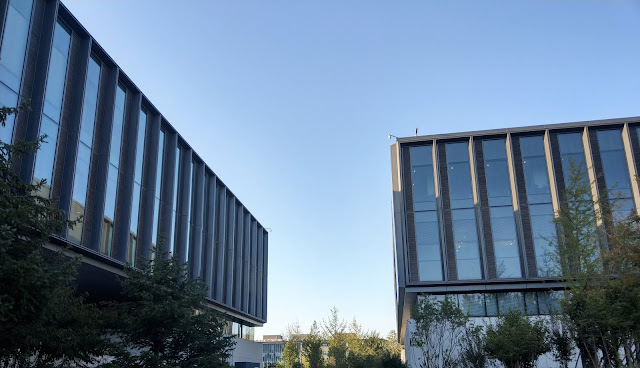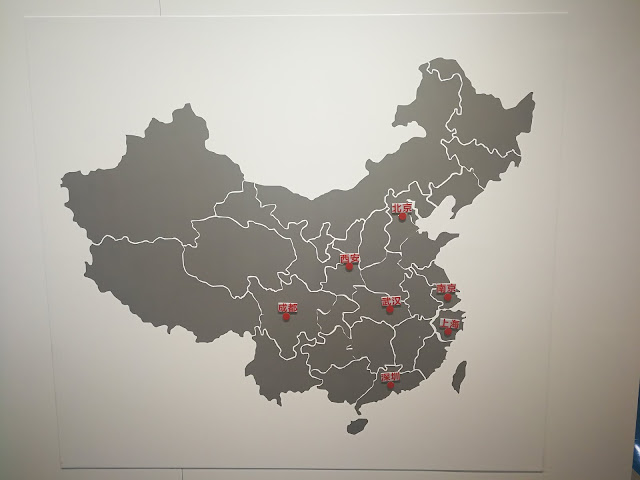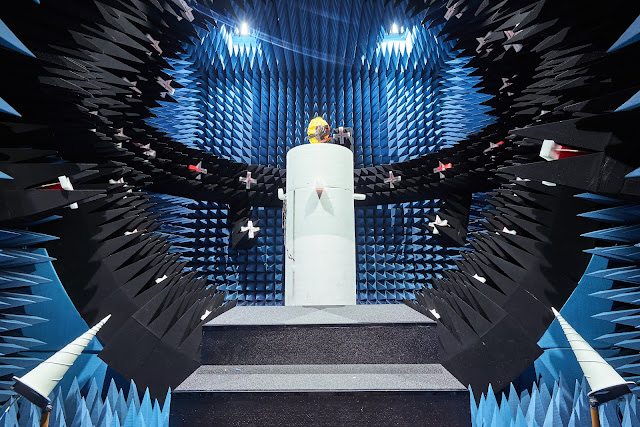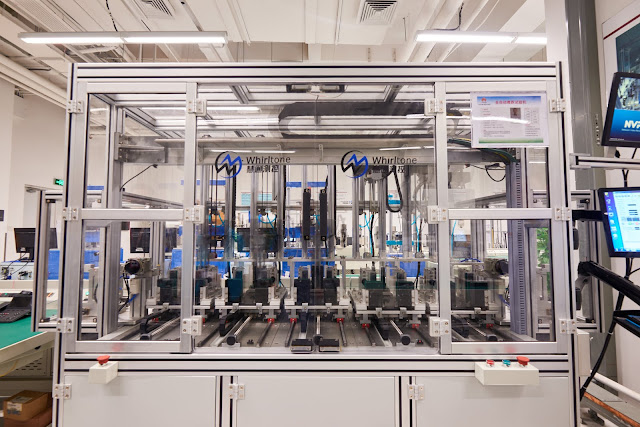
As Huawei is essentially a Chinese-born company, that spent nearly 15% of their revenue last year on R&D, it is natural for their R&D centres to be in the heart of China. The 5 major R&D centers in China, and many more that are spread out globally, allowed for the gathering of expertise of each country. As a result, Huawei now has a whopping 280 world’s leading technologies relating to the carrier, enterprise and consumer sectors.

We headed to the birthplace of the Kirin 970 and their latest flagship Mate 10, and it allowed us to have a full appreciation of their newest technology. The R&D centre we visited in Beijing fronted the development of the Nova lineup, spanning up to 10,000 square meters. This meant that we were given the chance to view some unreleased Nova (maybe even Honor) smartphones that were being worked on. Sadly, no photos of those devices could be taken.
Audio Quality
 One of the many labs of the R&D centre housed several acoustic chambers. Pyramid-shaped foams were specially designed to absorb sound lined the entirety of the inner walls. These were used to ensure that the testing of the smartphones’ audio quality was isolated from external factors. Staying in these rooms for just mere minutes could only be described by two words – deafening silence.
One of the many labs of the R&D centre housed several acoustic chambers. Pyramid-shaped foams were specially designed to absorb sound lined the entirety of the inner walls. These were used to ensure that the testing of the smartphones’ audio quality was isolated from external factors. Staying in these rooms for just mere minutes could only be described by two words – deafening silence.


A separate acoustic chamber was also used as a controlled environment, with speakers at every corner and side of the walls. These speakers were pointed at the head of a dummy with a Huawei smartphone placed at its ear, positioning it as if a phone call was being made. To simulate it further, audio can also be played through the mouth of the dummy as if a person was speaking.

A noisy environment can also be simulated through the surrounding speakers. This allows the engineers to ensure that the smartphone could both receive and transmit clear audio when making a call. The sound levels could also be tailored to prevent the phone from being too loud and possibly damage the user’s hearing.
Endurance & Durability
 Durability is definitely one of the deciding factors for many when purchasing a smartphone. That is why there is a whole lab dedicated to test the endurance of various aspects of the devices. The lab consists of multiple testing contraptions that can be seen below.
Durability is definitely one of the deciding factors for many when purchasing a smartphone. That is why there is a whole lab dedicated to test the endurance of various aspects of the devices. The lab consists of multiple testing contraptions that can be seen below.
As stated by one of the engineers, the buttons and screens are tested over a thousand times to ensure that the lifespan of the device is not limited by physical use.

Controlled drop tests, that were painful to watch, were done repeatedly to each device. This ensures that they would survive the common mishaps that were faced by almost everyone.


Always have a habit of sitting on your smartphone that was in your butt pocket? Huawei got you covered with their Gluteus Maximus 2000 (not the real name).

In that facility, there is even a machine to test for moisture protection of up to IP X2.

Security Compliance
 |
| What is the GDPR? by Evidon |
Huawei even has a lab dedicated to the security of their devices. To comply with the General Data Protection Regulation (EU), they have several security components to keep hackers out for at least a year through encryption.
On the application side is the Defender Secdroid. It ensures that no pre-installed apps were maliciously modified, and also searches for viruses and vulnerabilities. It protects your privacy with the tracking of unknown web traffic as well as the access to hardware capabilities such as the microphone. It can even identify if the application is valid with its certificate (RSA Public Key). Other components and their role also include – Peach Fuzzer (framework), IOFuzzer (kernel) and Riscure Inspecture (hardware).
Automated Testing
Within the lab sits rows of server-like racks, which allows up to 5,000 devices to be tested at once. The productivity of these racks can be translated into work done by up to 10,000 staffs, with the smartphones being controlled and monitored using software. This meant that the touch inputs of users can be simulated, allowing for a much quicker and efficient testing workflow. It is also required as each device has to be tested for over 1000 hours and is not practical for humans to do so. Thanks to the visit, we also managed to get a sneak peek at several (covered) unreleased Honor phones that were in development.
New Appreciation

Sadly, these labs were the extent of which we were allowed to view. However, the tour into Huawei’s R&D centre was an eye-opening experience. Being able to view the various labs and their developing devices showed the inner intricacies when it comes to the research and development of a brand-new smartphone.
For the LATEST tech updates,
FOLLOW us on our Twitter
LIKE us on our FaceBook
SUBSCRIBE to us on our YouTube Channel!





